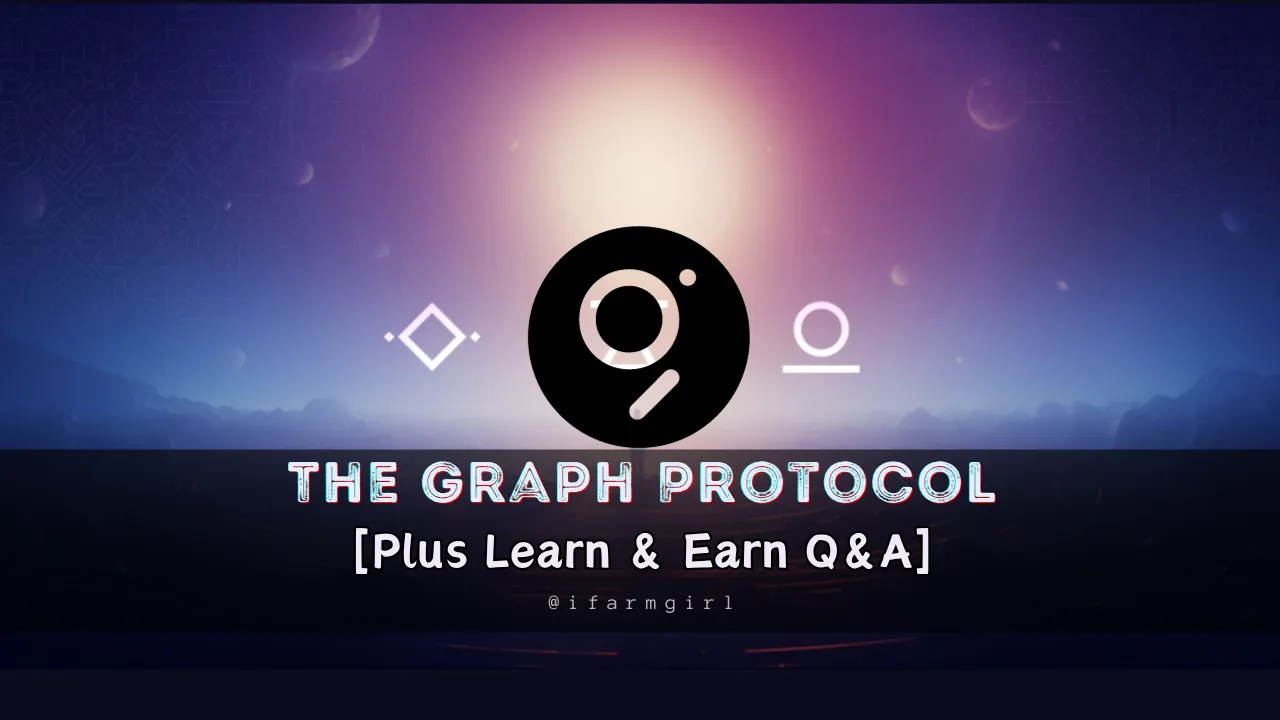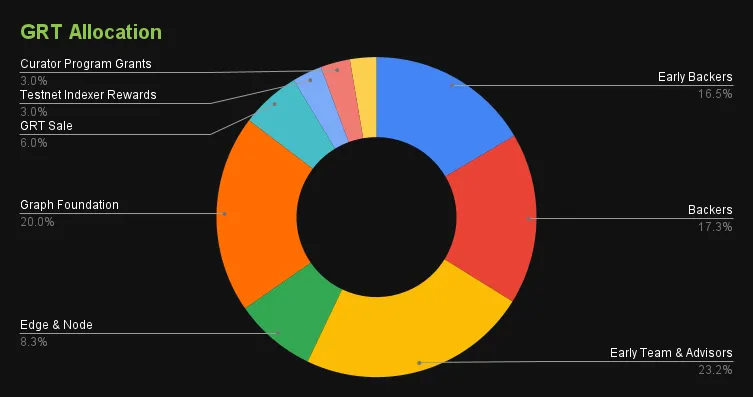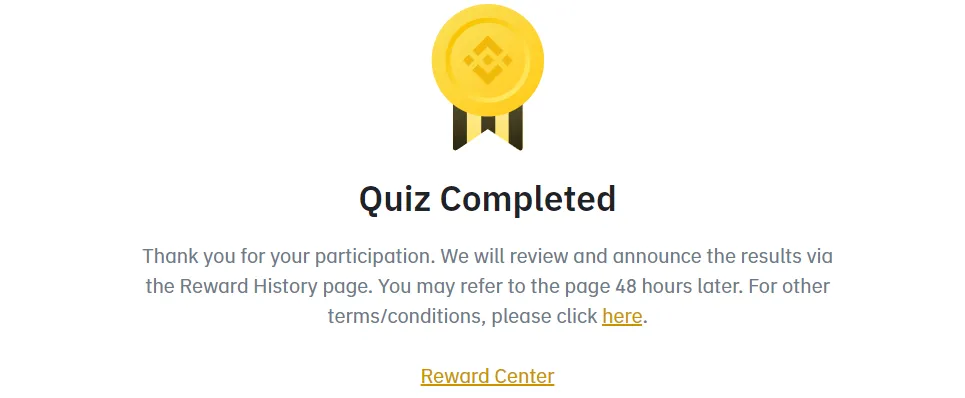While I have already taken out most of my crypto assets from Binance, I still check the exchange now and then for some day trading. Yesterday, I found out that there's an ongoing Learn and Earn quiz and the topic is The Graph Protocol. But first, let's check what it is about.

The Graph Protocol
This is a decentralized, open source indexing protocol that is designed to make blockchain data easily accessible to developers. Accordingly, it is like Google but for blockchains.
It was launched in 2018 and hosted on Ethereum. According to Wikipedia, it now "supports to index data from 25 different blockchain protocols including Ethereum, NEAR, Arbitrium, Optimism, Polygon, Avalanche, Celo, Fantom, and Moonbeam."¹
It is a protocol that enables developers, DApps, and users to access, organize, and query blockchain data efficiently and securely. It's like a search engine for blockchains, empowering developers to query data from the blockchain quickly and in an organized manner.²
The protocol uses open APIs called subgraphs which are "like a map that organizes data from different blockchain networks. Subgraphs enable developers to define and deploy APIs, allowing anyone to query specific data swiftly and reliably."³
It collects, organizes, and stores data from other blockchains, making it searchable by users. Using The Graph enables developers to quickly access and analyze data from blockchain networks, making decentralized applications (DApps) easier to build.⁴
The Graph is being used by popular Ethereum decentralized applications like Aave, Curve, and Uniswap.⁵
Main Network Participants
From the Whitepaper, there are 4 main network participants in The Graph Protocol and they are as follows:
Delegators
They delegate GRT to Indexers and secure the network. In return, they passively earn GRT based on a percentage of all query fees and indexing rewards from the Indexer.
Curators
They find the best subgraphs for Indexers. They "identify high-quality subgraphs, and curate them (i.e., signal GRT on them) to earn curation shares, which guarantee a percentage of all future query fees generated by the subgraph."⁶
Developers
They build & query subgraphs.
Indexers
They are the backbone of blockchain data. "They operate independent hardware and software powering The Graph’s decentralized network. "⁷ They earn GRT tokens for their work.
GRT Token
This is the native currency of the Graph protocol.
Ticker: $GRT
Total Supply: 10 billion
3% new issuance annually to reward Indexers for allocating stakes on subgraphs.⁸Circulating Supply: 9,314,131,385
Market Cap: $1.4B as of 27/11/2023
The token was distributed and allocated as follows and is expected to be fully vested in February 2026.

GRT is the main work utility token for the Graph protocol. It is used in various ways including staking, delegating, network governance, and as a medium of exchange within the ecosystem. It is used to reward participants for their contributions.
The Graph (GRT) has a burning mechanism where approximately 1% of the GRT supply is burned each year through different activities on the network which include a 0.5% delegation tax, 1% Curator's tax, and 1% of query fees for blockchain data.⁹
The project received massive support (about $279 million during its Seed Round to funding round.
The token is traded in different exchanges including Binance, Kraken, Coinbase, MEXC, and many others.
Learn and Earn GRT on Binance
There is an ongoing quiz where anyone who successfully completes the 12 questions will earn staked GRT.

I participated in it and here are the questions and answers. I forgot to take a screenshot of one of them though so I'm only sharing 11 of them.
👉 Q: What is the role of Delegators in The Graph Protocol?
- A: To secure the network and expand Indexer operations.
👉 Q: How does GRT contribute to the network?
- A: By incentivizing participants and paying for queries.
👉 Q: How does The Graph improves the accessibility of blockchain data?
- A: By deploying open APIs called subgraphs.
👉 Q: How does The Graph solve the issue of accessing blockchain data?
- A: Through its decentralized architecture and indexing capabilities.
👉 Q: How does The Graph contribute to a more transparent and efficient data marketplace?
- A: By organizing and making blockchain data accessible.
👉 Q: Who are the key participants in The Graph ecosystem?
- A: Indexers, curators, and delegators.
👉 Q: How does The Graph transform our interaction with the decentralized web?
- A: By making blockchain data more organized, efficient, and reliable.
👉 Q: What do delegators do in The Graph ecosystem?
- A: They delegate their GRT to trusted indexers and earn rewards.
👉 Q: What are subgraphs in The Graph?
- A: Open APIs that map and organize blockchain data from different blockchain networks.
👉 Q: What is The Graph Protocol?
- A: Protocol for accessing, organizing, and querying blockchain data.
👉 Q: Which role in The Graph protocol ensures data availability and reliability?
- A: Indexers
Source: Binance Academy
Conclusion
Apparently, The Graph offers developers the opportunity to build applications faster, spend less (60-98% savings each month), and have a 99.9% uptime for their apps.¹⁰
There are a lot of DApps (DeFi, NFTs, DAOs, Analytics, Gaming etc) that use The Graph. Here's a glimpse of the activities on The Graph and their numbers.

I believe that the Learn to Earn quiz on Binance is on a first-come-first-served basis while the available rewards last. If you want to participate, do it fast, or else. LOL!
Info Sources: The Graph / Coingecko / Kraken / Wikipedia / Binance / Cointelegraph For infotainment only. Do note that these questions and answers and based on the quiz that was presented to me and I do not guarantee their accuracy. Lead image created on Canva. Logo and photos from The Graph. Screenshots are linked directly to their sources. No copyright infringement intended. 27112023/11:30ph
